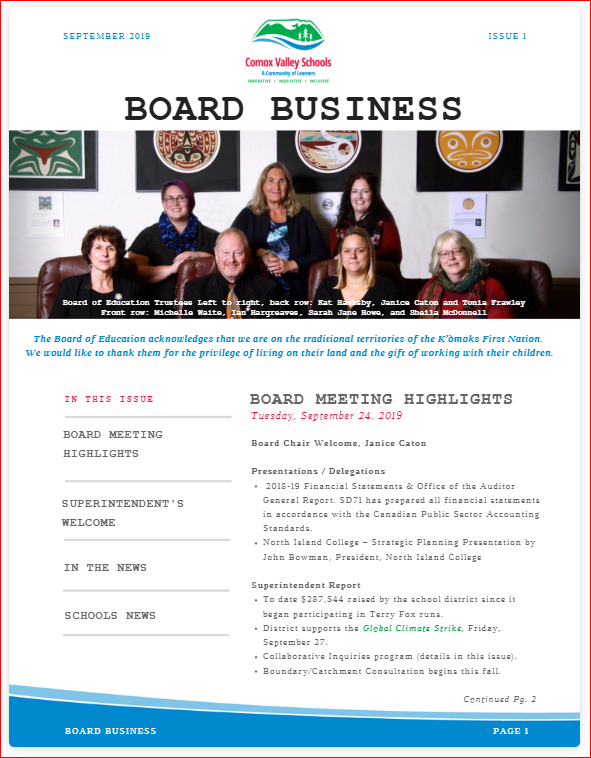– Feature image source: Reuters Plus, 2019, March 13.
I’m a link junkie, I admit! Rarely will my content strategy be solely based on simple words on a webpage. I leave little gems of additional information and trails to other suggested readings in almost everything I post. It’s my way of validating the content and reinforcing its purpose with credible industry resources or influence marketers’ viewpoints to demonstrate to my audience that I’m not making my content up. It has meaningful relevance. Question is, does it work? Does it achieve an objective? Is anyone really paying any attention?
The Online Media Room (OMR) took me on a journey to seek and find answers to these three questions. All references assigned in the readings state one thing, begin by knowing your audience. It brought to light a better understanding of why we created a buyer persona during Market and Consumer Research Analysis. This fictional representation of the ideal customer for my capstone project client, Comox Valley Schools, should be at the heart of all content strategy decision making. Content, I learned from the reference material, including Hubspot, should answer their three questions before it answers mine:
- What are the problems?
- What does she need most?
- What information is she searching for?
To find the answers involves a bit of guesswork, at best, without credible survey results. Then it struck me that I have at my disposal a plethora of answers right at my fingertips. In my role as Manager of Communications for my client, I visit schools and classrooms often. Educators frequently ask for a story to be covered or to help spread information about an initiative throughout the community. Extending theses staff interactions by an extra five minutes, I can find answers to these questions.
Furthermore, with the launch of the Comox Valley School podcast, I can turn these questions into compelling content in each episode and share with the internal and external audience. By using a marketing and storytelling strategy, I am, in fact, conducting valuable research and gathering some very insightful results. Alas, my made-up representative suddenly isn’t such a mystery to me anymore.
Here’s a concrete example to demonstrate why beginning with the audience in mind can enhance and improve a content strategy. Let me share my recent experience in creating a monthly newsletter for my client. The newsletter is a compilation of school district announcements, school stories and a brief summary of the Board Meeting highlight. The first issue, which I have conveniently linked in this journal post will hit the streets Monday, September 30th. Included in the content is a fairly significant announcement from the Superintendent about a funding initiative for collaborative learning. Educators were initially notified about the program by way of one single email. Should this email be overlooked in the mountain of email correspondence and notifications staff received daily, educators might miss out on a very advantageous and lucrative professional development program. Worse, efforts to improve the organizational culture can be lost by not going the extra mile to ensure staff are receiving relevant and meaningful information that matters to them. The goal of the P.R. practitioner’s internal communication strategy, after all, is to improve the employee experience in the aim of recruiting a coalition of brand ambassadors.

The focus of the newsletter turned from and exercise in gathering and sharing information to the user experience (UX). To be effective in communicating the collaborative inquiries program to educators, the newsletter needed to be linked to a place where the content, including application details and supporting background information, could be easily found and readily accessible. The content required its own webpage, so I created one on my client’s website using a unique URL redirect for easy identification of the material by the users and embedded hyperlinks throughout the text. https://www.comoxvalleyschools.ca/collectiveinquiryapplication/.
Morten Rand-Hendriksen summarizes the problem with solving content strategy dilemma correctly when he states in his Lynda.com tutorial that content is not just about creating messages, it’s about creating messages with purpose to give it the best chance of being heard and understood by the intended audience.
Reference
Goliger, S. and Hussain A. (n.d.). A practical guide: Building a killer content strategy. ContentStrategy_b662c9e9-0ac9-44ae-a0cc-7880511aca3c_1e1edd83-1221-46aa-9a74-ad66b07795ae.pdf
Rand-Hendriksen, M. (2016, June 30). US foundations: Content Strategy. https://www.lynda.com/Content-Strategy-tutorials/Foundations-UX-Content-Strategy/473877-2.html

